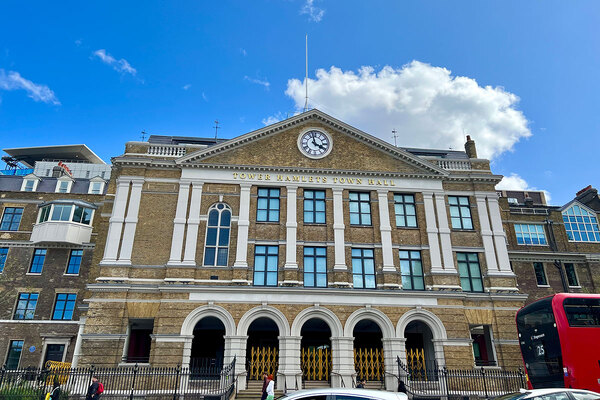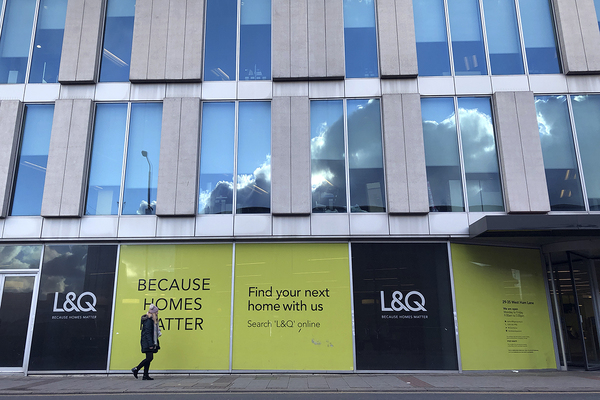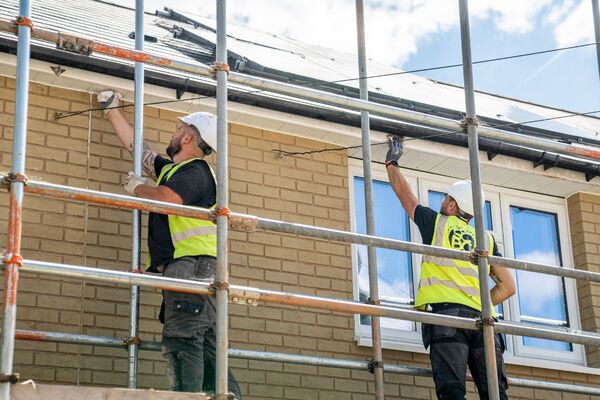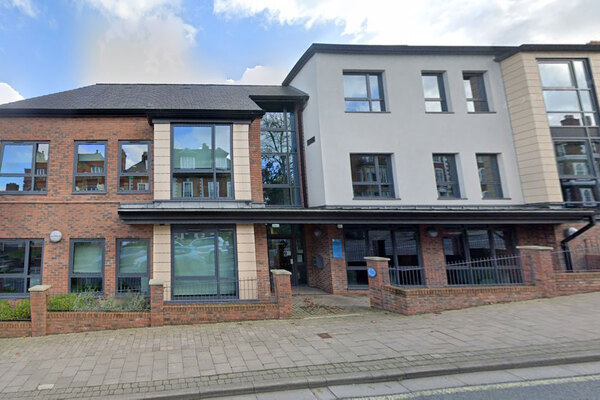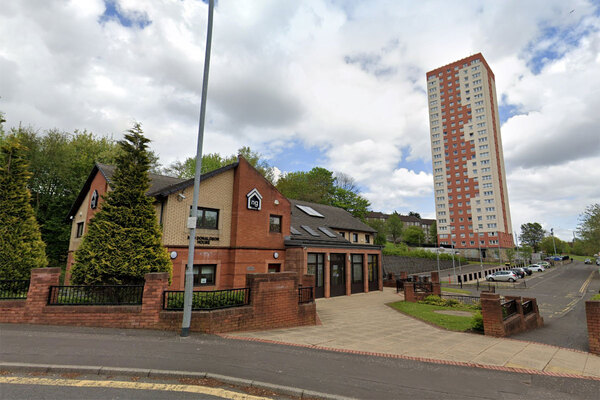House Proud: Education
In the latest of our House Proud campaign series, which aims to put housing at the heart of politics, Caroline Thorpe finds out why better housing means a better education and, ultimately, a better life

‘Education is the best provision for old age,’ said Aristotle. That was in the fourth century BC. It remains true today.
It is also true that living in decent housing makes it much easier for people to gain that education. Countless studies - from John Hills’ seminal 2005 work on social housing, to last year’s cohort study on growing up in social housing from the Tenant Services Authority - link poor housing to poor education. In turn, as our ancient Greek philosopher suggests, that leads to significantly impoverished lives for many.
Housing providers are thus uniquely placed to reverse the fortunes of those at risk of educational underachievement. Not only that, they can make a considerable difference.
Housing charity Shelter believes there are 1.6 million children, around 13 per cent of today’s youngsters, living in overcrowded, temporary, dilapidated, damp or dangerous homes in the UK. Shelter also estimates that a quarter of children living in such conditions gain no GCSEs, compared with a tenth of those housed well.
Improving homes isn’t the only way housing professionals can, and do, help boost educational achievement. Nationwide, they are working successfully to keep young people in education, get older ones learning again, provide educational facilities and tackle barriers to learning including homelessness, substance abuse and unwanted pregnancies.
‘Education’s real power lies in its ability to transform the lives of children brought up in the toughest of circumstances,’ reads the Conservative Party’s 2010 draft election manifesto. The housing sector is ahead of the rhetoric. As House Proud, the joint campaign from Inside Housing and the Chartered Institute of Housing which presents policymakers with the case for housing, enters its third week we set out the significant contribution the housing sector makes to education.
Elementary lessons
Let’s start with bricks and mortar. A safe, warm and adequately sized place to call home means more students achieving better grades. Shelter’s research reveals that only around half of poorly housed children gain five GCSEs, compared with 71 per cent of other children. In addition, badly housed 11 to 15 year-olds are twice as likely as others to have been excluded from school.
Liz teaches seven and eight year-olds in a combined primary school in what she calls a ‘relatively affluent’ suburb of a major English city. She says it is not hard to spot those who are badly housed; about half the school’s 400 headcount she reckons. ‘The biggest thing is homework. It seems to be more difficult to get homework from those children. They often live in noisy or overcrowded homes. They haven’t got anywhere to do it.’
She adds that, generally, children living in unsuitable housing behave differently from their better housed peers. ‘They have difficulty concentrating, and poor listening skills. It does mean that quite often you’re stopping and starting lessons.’
Social landlords have made strides in improving the quality of their housing stock through the multibillion pound decent homes programme. On top of this, Housing Corporation figures suggest that, on average, individual housing associations spend £1.8 million annually on routine refurbishment. And landlords’ development programmes - social landlords built 25 per cent of the new homes completed in the first quarter of last year - seek to alleviate the overcrowding that can so hamper students’ chances. It is crucial that as the decent homes deadline passes this year, and the Homes and Communities Agency is forced to spread development grant ever thinner, a new government does not forget housing’s contribution on both these fronts.
Increasingly, though, social landlords are finding additional ways to improve educational opportunities. Take ‘Neets’, the term used to describe 16 to 24 year-olds not in education, employment or training. There are 959,000 Neets in the UK according to official figures. Each one will cost the taxpayer £52,000 during their lifetime, chiefly through lost economic activity, estimate researchers at York and Hull universities.
Housing organisations are uniquely placed to support Neets thanks to their community links, argues a recent CIH report backed by the Department for Children, Schools and Families. East Thames Housing Association, for example, runs an afterschool programme for pupils at risk of becoming Neets. Every single student who took part in a pilot for the £10,000 course has stayed on at school.
Other landlords fund and run homework clubs, sports and gardening activities, mentoring schemes and training opportunities. Teacher Liz explains how, as well as being valuable in themselves, such activities can improve classroom life. ‘Quite often [inadequately housed pupils] are left to their own devices after school. They end up playing with children who are quite a lot older. That has a huge impact on some children,’ she says.
Since 2004, Hyde Housing Association has invested an average £35,000 a year on a bursary scheme, run by its charitable arm Hyde Plus. The Hyde Young Pride Award offers up to £200 per child to all children of Hyde residents to pay for positive activities.
The £173,000 awarded to date includes £24,220 on tutoring (equal to 176 additional school days) and £17,300 on music lessons (that’s 1,153 half hour lessons at £15 each). Eorran O’Connor, a beneficiary from south London, spent her award on extra Greek lessons. She has just won a place at Cambridge University, and says the lessons were ‘essential’ in her success.
‘A university degree in classics will enable me to pursue a career in classics, the subject I have been passionate about since learning about gods and goddesses in primary school,’ says the 17-year old. Eorran’s achievement is not a one-off. More than half the parents of children who received a bursary say their children’s school performance improved subsequently.
Housing’s ability to educate doesn’t stop with traditional subject matter. Many providers visit classrooms to share their expertise on tackling life-hindering problems, including anti-social behaviour, bullying, drug abuse, sexual health and homelessness.
The sector’s partnering skills also come into play here. For example, after Contour Housing Group joined forces with Limeside Primary School in Oldham, a series of initiatives aimed at raising aspirations and improving behaviour led to school inspectors describing the school as ‘a beacon within the community’. Quite something for a school in special measures as recently as 2000.
Some landlords have even got into the business of funding new schools. Gentoo, for example, sponsored Sunderland’s state-of-the-art Academy 360 to the tune of £1 million, which triggered £23 million more from the government’s Building Schools for the Future fund. Similarly the New Charter Academy opened in 2008 thanks to £2 million in sponsorship from the eponymous housing association.
Nor do landlords stick to helping the youngsters. Broadland Housing Association in East Anglia is among those working with residents who may have missed out on opportunities during their school careers. A year ago it launched a pilot employment and training scheme for residents. In just over three months it had helped 32 people.
It’s impossible to calculate the total value, both in terms of housing’s financial contribution to such endeavours and the money they save the exchequer. (Though the sums that are possible are quite remarkable. See House Proud stats, above). Needless to say it’s considerable. It is also under threat, as landlords face costly rent fluctuations, shrinking grant and ruthless efficiency targets. Only a foolhardy politician would jeopardise housing’s contribution. For investment in housing makes for a smarter population - and a fairer society.
The CIH says
‘Housing and schools working in partnership are key, long-term stakeholders within a community. They can both deliver real benefits to communities beyond their core roles of accommodation and education.
‘For example, housing has an active relationship with tenants and can support schools in engaging with the wider community. Poverty, social deprivation and neighbourhood decline has a detrimental effect on educational outcomes and achievement. Housing can - and does - work with schools to tackle these factors.
‘In areas where housing providers work to improve neighbourhoods, more people want to live there which in turn can lead to more popular local schools. Moreover, settled housing has a positive affect on children’s behaviour both in and out of school.’
Sarah Webb, chief executive, Chartered Institute of Housing
School house
East Potential (charity arm of East Thames Group)
Where Eastlea School, east London
What afterschool programme for pupils at risk of becoming Neets
Cost £10,000, for 30 week course
‘The Eastlea programme really works,’ says Sue Withers, the interim manager at East Potential who designed the course.
In 2009 Eastlea School, an east London comprehensive, asked her to write and deliver a 10-week programme for ‘pre-Neets’ - pupils in danger of falling out of education and, subsequently, failing to gain employment or training.
It worked. All 15-odd 14-15 year olds who took the course last spring turned up for the new school year in September, and remain studying, says Ms Withers.
The former careers advisor and psychotherapist is now mid-way through delivering a year-long course for this year’s batch of year 10 pupils.
Sessions cover post-16 options, goal setting, drug awareness, communication skills and avoiding sexual health problems.
Ms Withers says her background working in schools and communities qualifies her for the job. ‘Over the years I became aware of the reasons why young people drop out of school,’ she says. ‘It’s about raising aspirations and developing confidence. It’s changing “I can’t” to “I can”.’
St Basil’s
Where Birmingham
What homelessness prevention in around 30 schools in areas with high levels of youth homelessness
Cost about £30,000 a year
‘J’ is 16. He lives at 15 Amber Terrace with his mum and dad, with whom he regularly argues. He is not a real person.
In fact, he is the central character in a theatre-based model St Basil’s manager Matt Green and his colleagues use when teaching Birmingham pupils how young people like them become homeless.
‘The first stage of the training is the pupils building up the characteristics and personality of J. We ask them what they think his family life is like, and school,’ he explains.
J ends up sofa surfing and sleeping rough. ‘We ask at what stage could J have asked for help,’ says Mr Green.
Finally, a young St Basil’s service user who has been a silent presence throughout, will tell his or her story. Mr Green calls this ‘the most powerful bit’ of the prevention session.
‘It’s about breaking down stereotypes. The students won’t necessarily know [the service user] is a homeless person until they get up at the end. But they’re there looking smart, clean, professional.’
Mr Green says the programme is ‘very successful’. At the last count, 90 per cent of participants said their understanding of homelessness had increased.
House Proud: the aims
1. Get 250 backers to sign our petition via www.insidehousing.co.uk/houseproud
2. Persuade the three main political parties to include a housing pledge in their election manifestos
3. Get the sector fighting housing’s corner - making housing a key election issue at every opportunity, and encouraging staff, residents, friends and family to do the same
House Proud stats: education
Every £1.20 spent on decent homes saves the taxpayer £1.80 on the cost of Neets*
Preventing one 16 to 18 year old becoming homeless saves £1,467 from the average council’s temporary accommodation budget**
Every £1 New Charter Housing Association spent sponsoring a new academy school attracted £43 in other funding
Sources: Inside Housing; University of York and University of Hull; Herriot Watt University; CIH; * assuming every decent home keeps one young person in education; **based on one rough sleeper presenting homeless and being deemed in priority need

